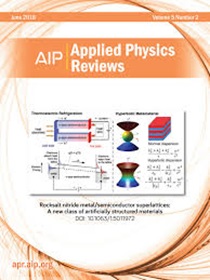量子图学习和算法在量子计算机科学和图像分类中的应用
IF 11.6
1区 物理与天体物理
Q1 PHYSICS, APPLIED
引用次数: 0
摘要
图论和网络理论在量子计算机科学,包括量子信息和计算中起着重要的作用。随机图和复杂网络理论是预测新的量子现象的关键,其中纠缠链接由边表示。量子算法的发展是为了增强各种网络问题的解决方案,从而产生了量子图计算和量子图学习(QGL)。在这篇综述中,我们探讨了图论和图学习方法作为量子计算机的强大工具,为经典系统无法解决的问题生成有效的解决方案。我们深入研究了量子复杂网络理论的发展及其在量子计算、材料发现和研究中的应用。我们还讨论了使用量子比特、量子门和量子电路进行有效图像分类的量子机器学习(QML)方法。此外,本文还讨论了QGL和算法的挑战,强调了开发灵活的QGL求解器所需的步骤。本文介绍了QGL和QML领域的全面概述,突出了最近的进展,并确定了未来研究的机会。本文章由计算机程序翻译,如有差异,请以英文原文为准。
Quantum graph learning and algorithms applied in quantum computer sciences and image classification
Graph and network theory play a fundamental role in quantum computer sciences, including quantum information and computation. Random graphs and complex network theory are pivotal in predicting novel quantum phenomena, where entangled links are represented by edges. Quantum algorithms have been developed to enhance solutions for various network problems, giving rise to quantum graph computing and quantum graph learning (QGL). In this review, we explore graph theory and graph learning methods as powerful tools for quantum computers to generate efficient solutions to problems beyond the reach of classical systems. We delve into the development of quantum complex network theory and its applications in quantum computation, materials discovery, and research. We also discuss quantum machine learning (QML) methodologies for effective image classification using qubits, quantum gates, and quantum circuits. Additionally, the paper addresses the challenges of QGL and algorithms, emphasizing the steps needed to develop flexible QGL solvers. This review presents a comprehensive overview of the fields of QGL and QML, highlights recent advancements, and identifies opportunities for future research.
求助全文
通过发布文献求助,成功后即可免费获取论文全文。
去求助
来源期刊

Applied physics reviews
PHYSICS, APPLIED-
CiteScore
22.50
自引率
2.00%
发文量
113
审稿时长
2 months
期刊介绍:
Applied Physics Reviews (APR) is a journal featuring articles on critical topics in experimental or theoretical research in applied physics and applications of physics to other scientific and engineering branches. The publication includes two main types of articles:
Original Research: These articles report on high-quality, novel research studies that are of significant interest to the applied physics community.
Reviews: Review articles in APR can either be authoritative and comprehensive assessments of established areas of applied physics or short, timely reviews of recent advances in established fields or emerging areas of applied physics.
 求助内容:
求助内容: 应助结果提醒方式:
应助结果提醒方式:


